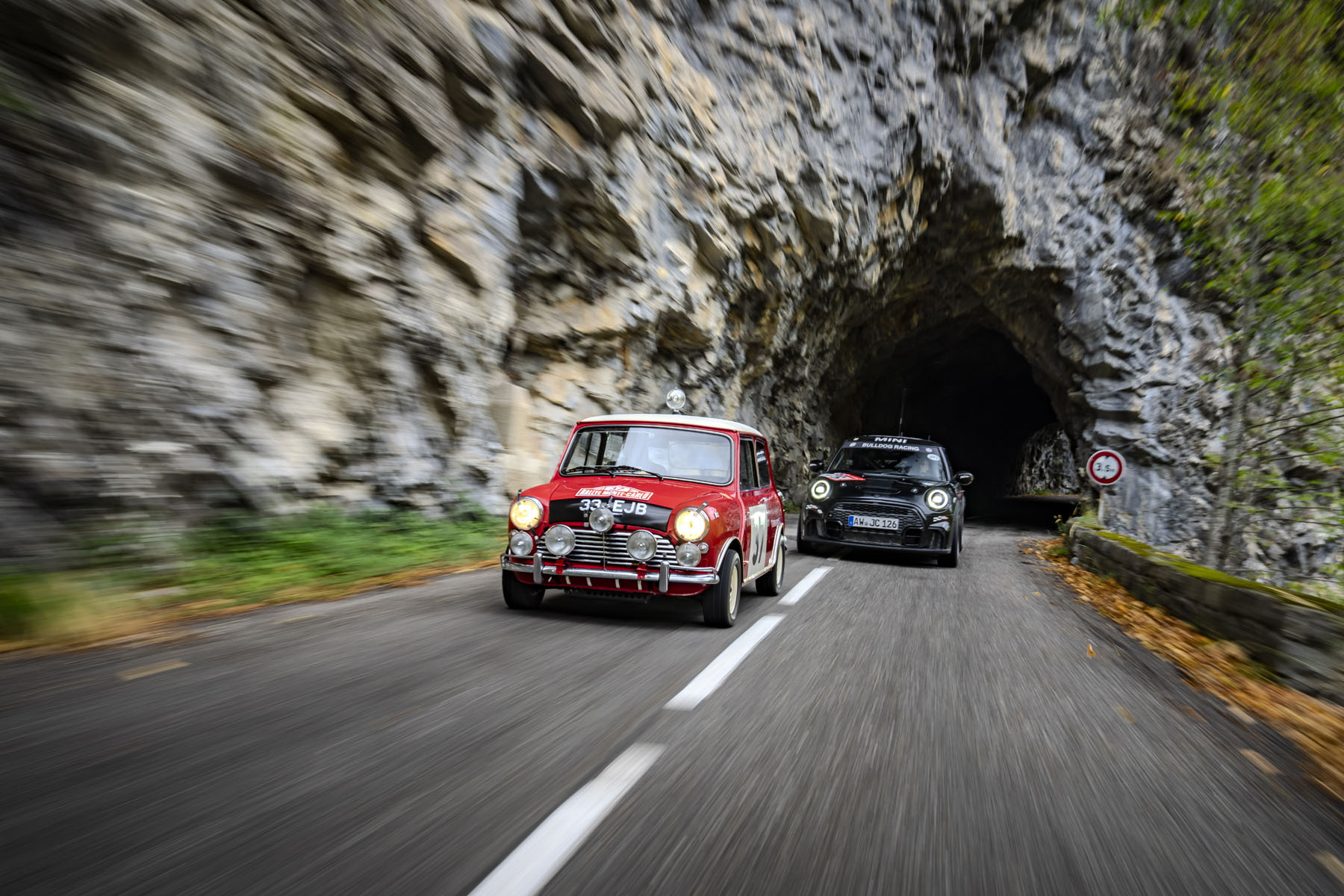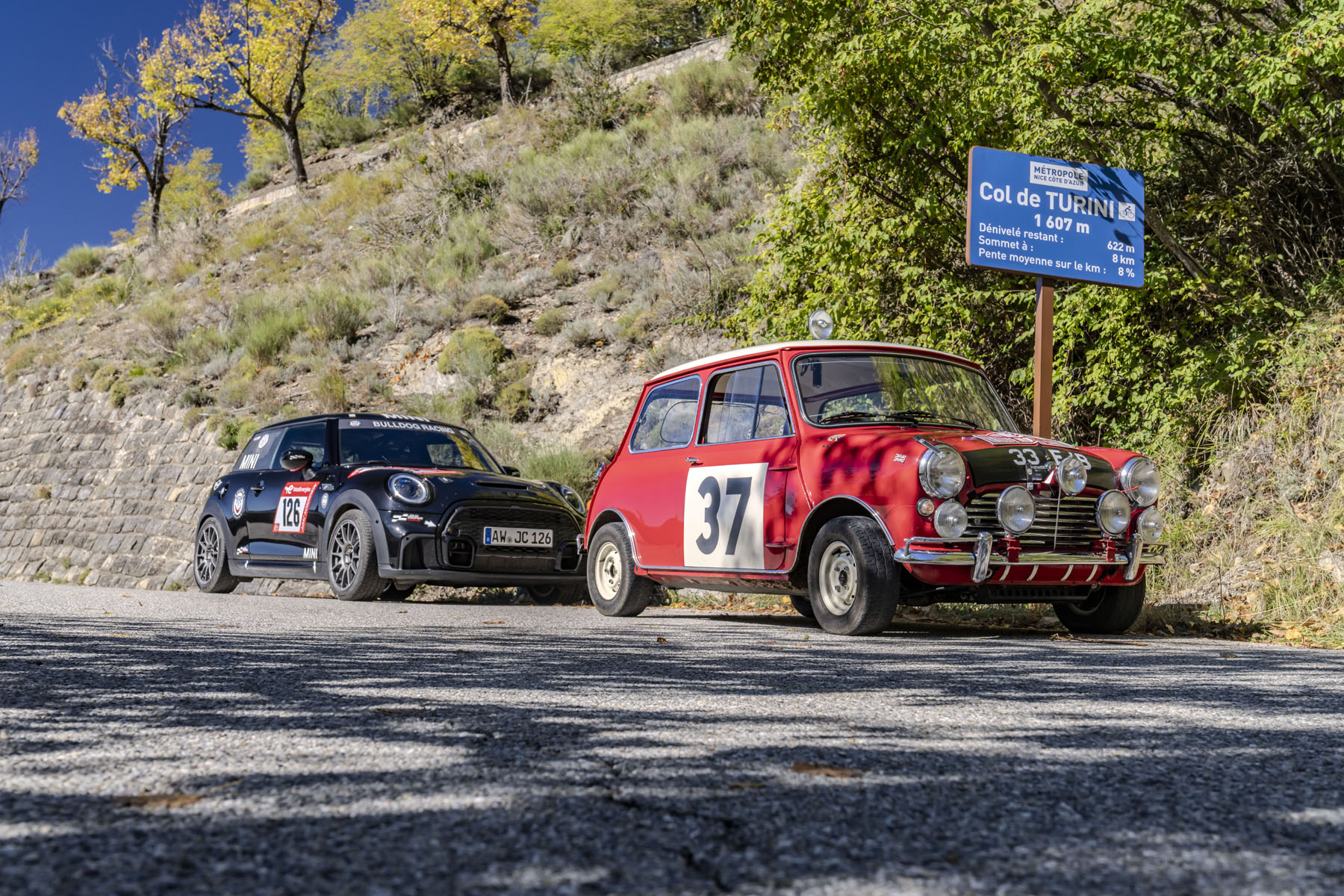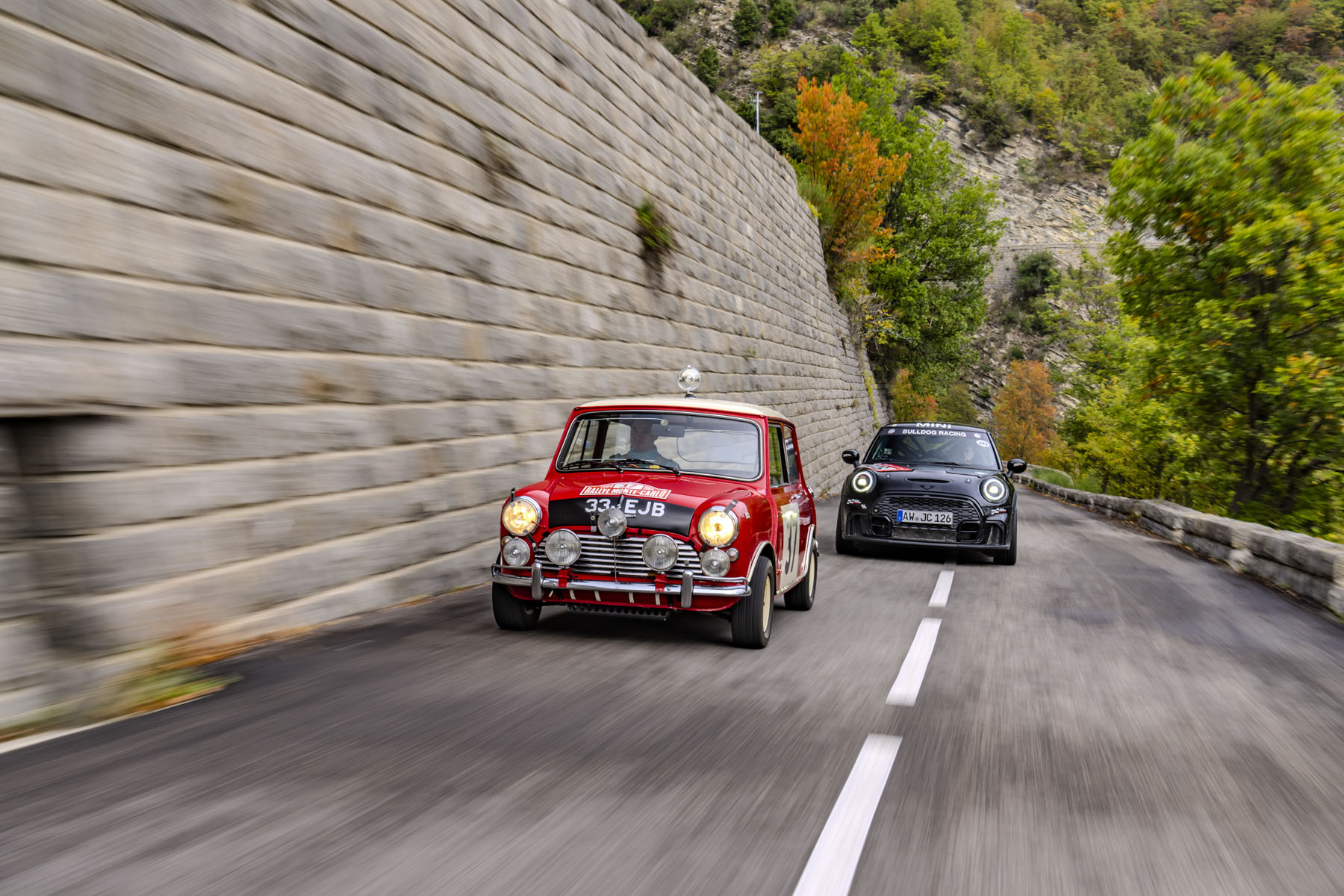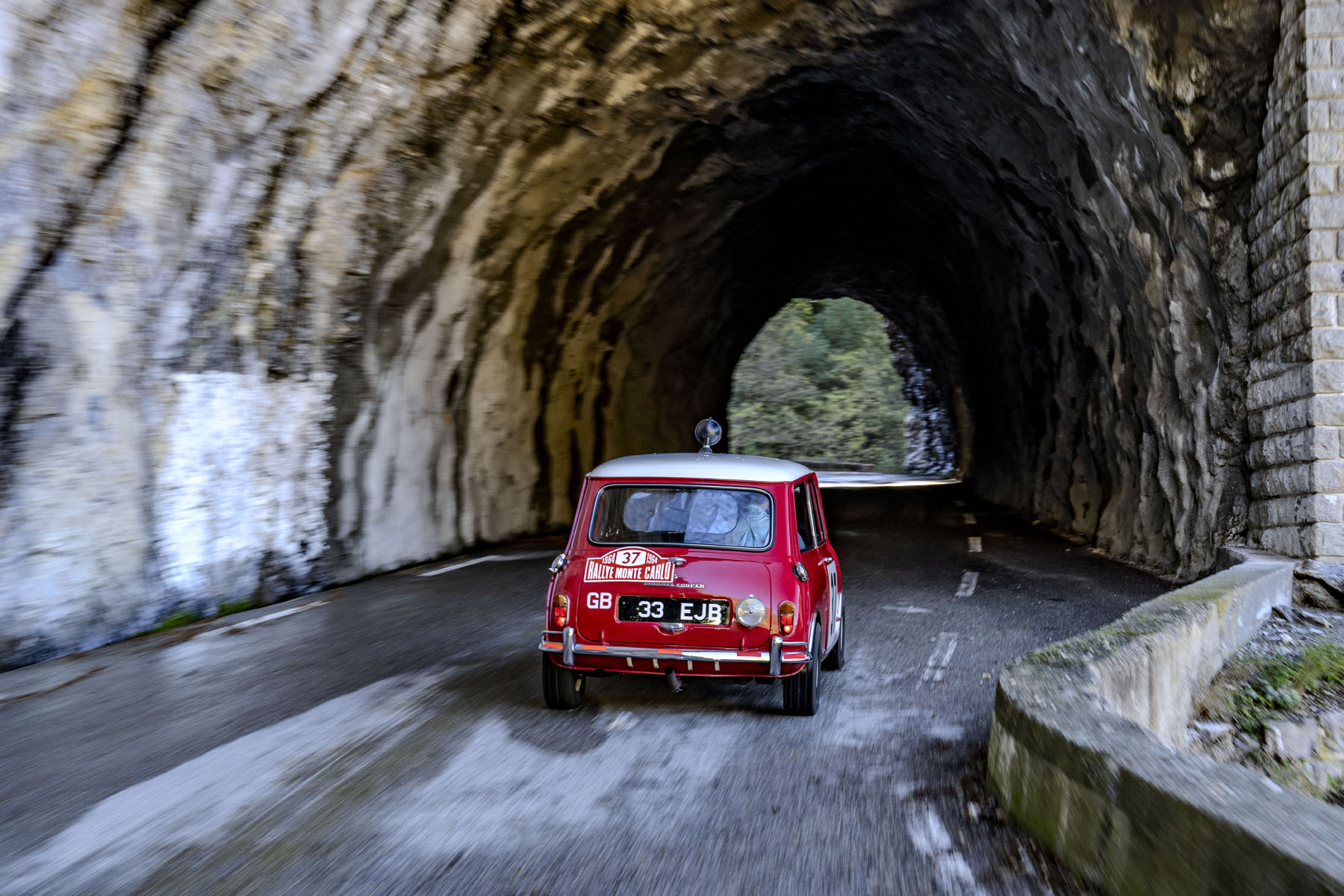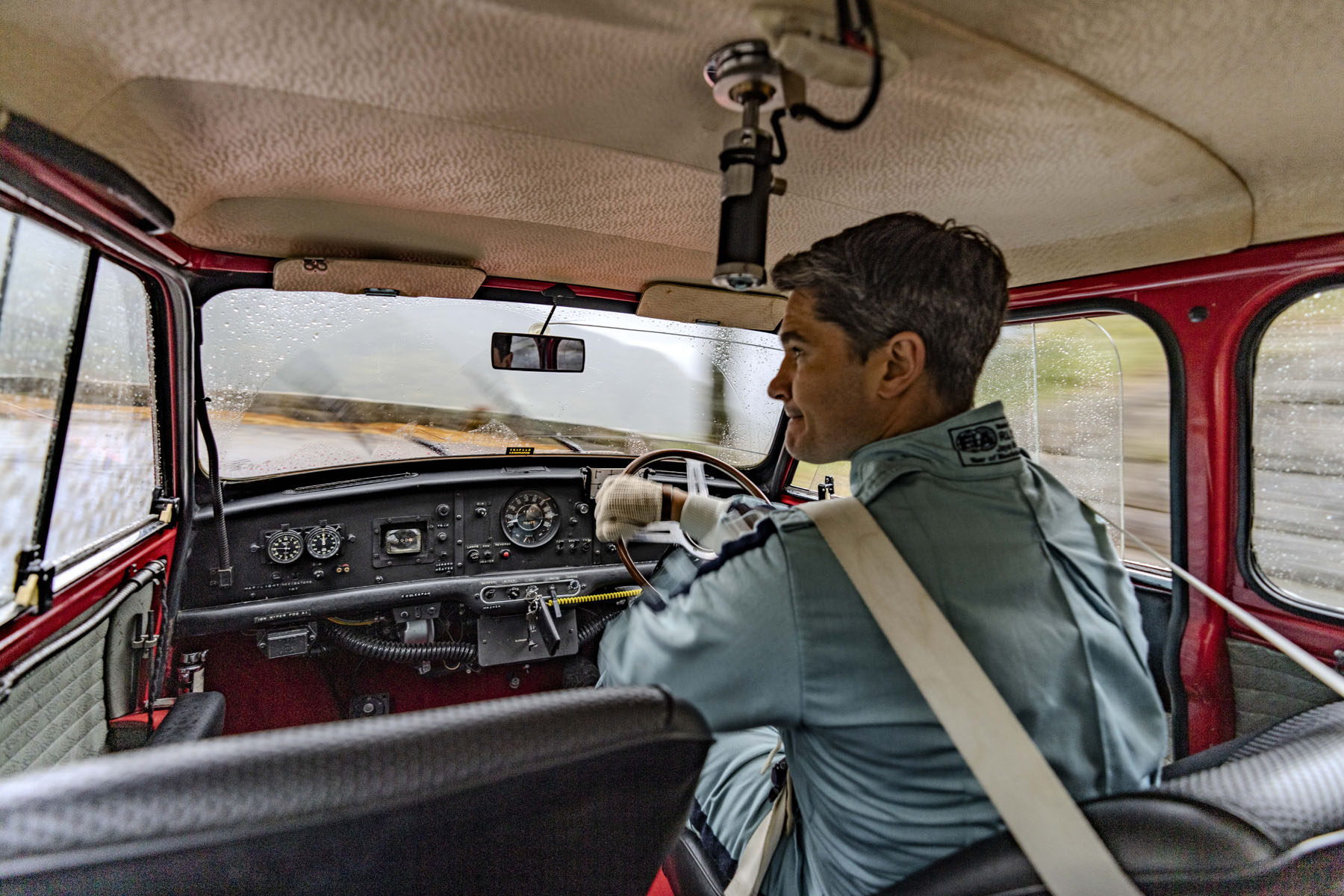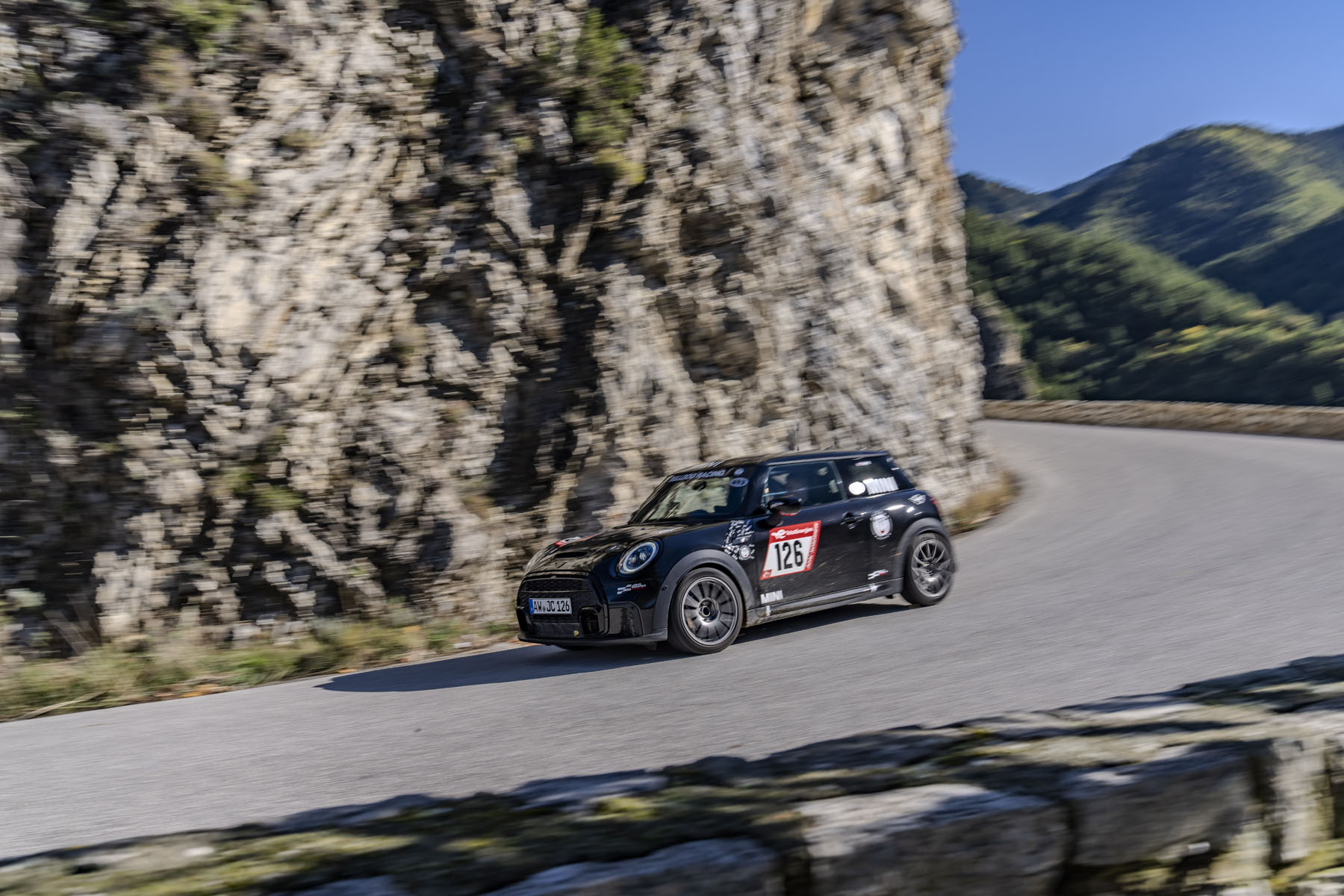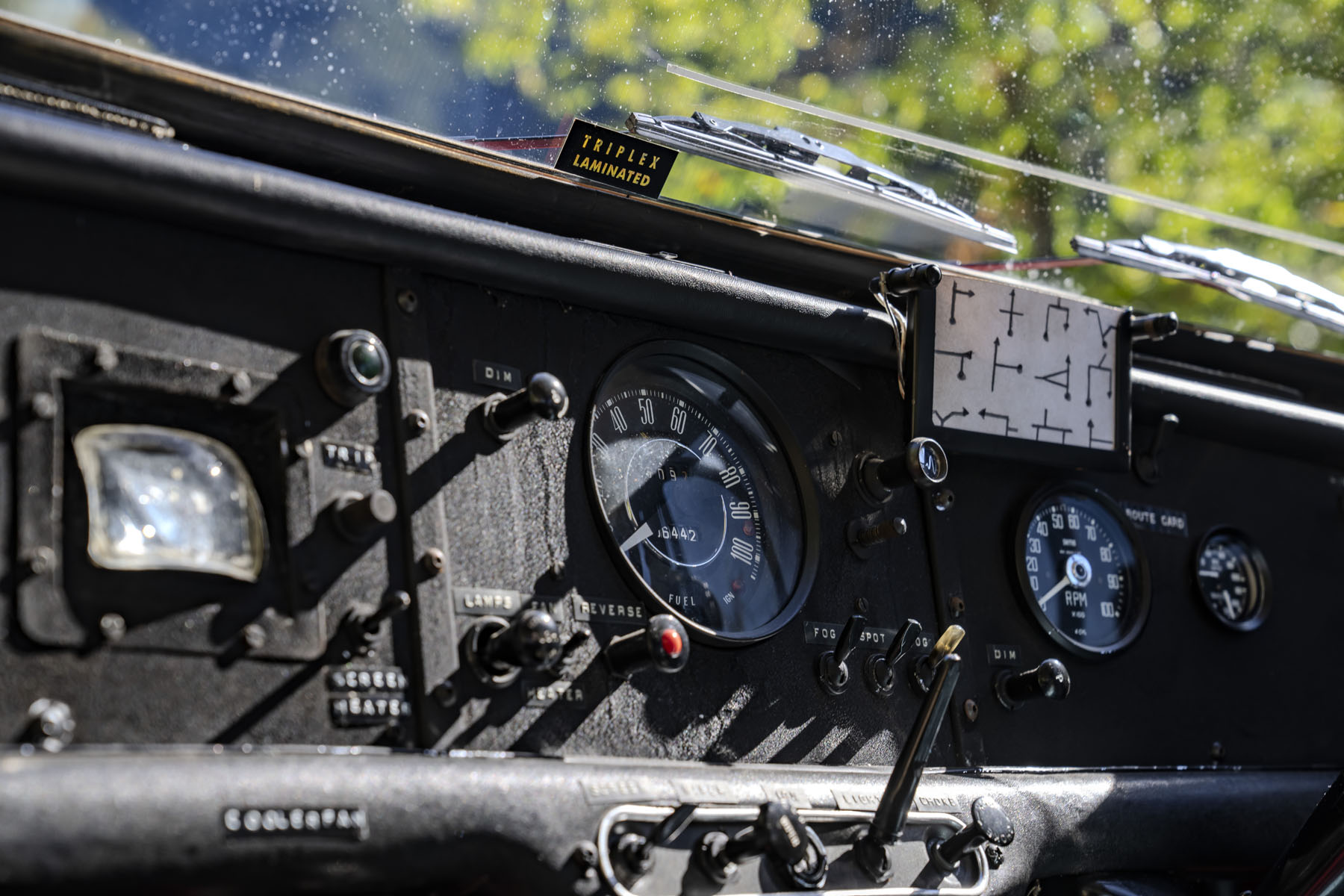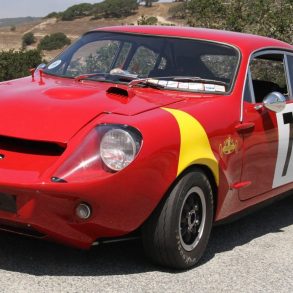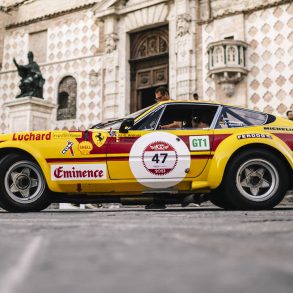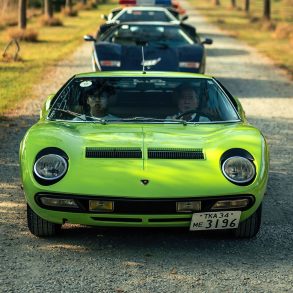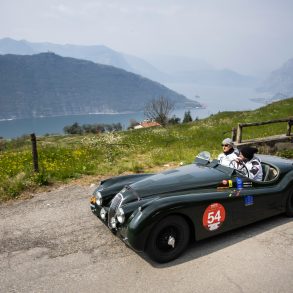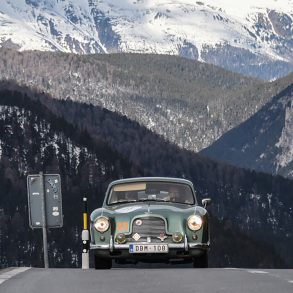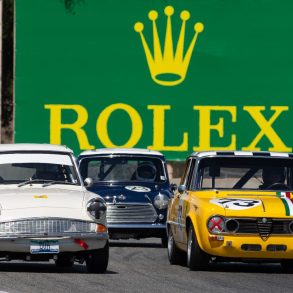2024 marks the 60th anniversary of one of the most spectacular successes in the history of international motorsport. With Irishman Patrick “Paddy” Hopkirk at the wheel, the Mini Cooper S won the overall standings of the Monte Carlo Rally. Happiness? Coincidence? A quirk of fate? Probably not, because two more victories followed at the Monte Carlo Rally and numerous other successes until the end of the 1960s. Looking back, the reasons for this were: modern technology, top drivers and new logistics standards.
“Paddy Hopkirk’s victory in the Mini Cooper S in 1964 marked a turning point in the history of Mini. It proved that the classic Mini was not only a charming city car, but also a successful car in motorsport. This tradition and passion for racing is in our legacy and can still be felt in our models today. Motorsport has shaped Mini and will always remain an important part of our DNA,” says Stefanie Wurst, Head of MINI.
Blueprint for modern small cars
At the end of the 1950s, the rally greats mostly moved in stately and lavishly motorized vehicles through English forests, over French passes or from Liège to Sofia and back again. Austin Healey and Ford Falcon were the benchmark at the rallies and dominated the scene. They weren’t really suitable for everyday use. During this time, Alec Issigonis, on behalf of the British Motor Corporation (BMC), built the the most modern car of its time: with its transverse engine and front-wheel drive, the classic Mini met the standard for small cars that is still valid today when it debuted in 1959.
An impressive sports career required a second brilliant car guy: John Cooper. He had achieved fame as a racing driver and wealth as a designer – and he was immediately convinced of the sporting potential of the classic Mini. Cooper, who in his Formula 1 cars did not place the engine in front of the driver, as was usual at the time, but behind him, summed it up to his friend Issigonis, who saw the classic Mini as more of a car for everyone: “That’s a damn race car. Give it more power, improve the brakes and build the thing.” The underestimated underdog – a role that MINI has been happy to take on again and again in its more than six decade history – was born.
64 years of the brand, 62 years of motorsport
The first Mini Cooper was created in 1960 – with an impressive 55 horsepower instead of the 34 horsepower of the original Mini from 1959. As early as 1961, the Mini Cooper, which was just three meters long, turned the world of high-speed drivers upside down. From now on, even the less well-off could tile across the country at least as quickly as the owners of pure sports cars and high-horsepower limousines. And on the rally trails and racing tracks, the little racers with their almost delicate ten-inch wheels won the trophies.
In May 1962, the classic Mini entered the winners’ list of an international rally event for the first time. At the International Tulip Rally, which led from the Dutch municipality of Noordwijk to the French Riviera and back again, Pat Moss, sister of the four-time vice world champion and 16-time Grand Prix winner Stirling Moss, drove the classic Mini Cooper in the fastest time over the route.
Finnish ice speedsters and virtuoso left brakers
Also in 1962, BMC sports director Stuart Turner signed two talents from the Nordic forests alongside Irishman Paddy Hopkirk: Timo Mäkinen and Rauno Aaltonen. The Finnish ice hustlers and virtuoso left-hand brakers shared a love for hard acceleration – and yet couldn’t be more different. Mäkinen was not a fan of many words and went down in history as the Flying Finn. Aaltonen speaks five languages fluently and pursued motorsports with scientific meticulousness, which later earned him the title of rally professor.
From then on, Mini began to reach for the stars. No matter how hopeless a task seems, Mini has always faced competition throughout its long history. The ingenious basic principle of the vehicle and the three top drivers were important pillars of success. Just like the professional logistics developed by Turner. He set new standards in terms of service organization and was the first team boss to send ice spies to the special stages. John Cooper continued to fine-tune the combustion chamber volume and produced 90 hp in the model now called Mini Cooper S after the displacement expansion to 1071 cc defined for the 1100 class.
Behind every success there is hard work
Even in the 1960s, it wasn’t easy to win the Monte Carlo Rally without any prep work. In 1963, Rauno Aaltonen took his first class win at the Monte. And yet the success in the overall ranking in 1964 was a big surprise for the competitors – the competition seemed too overwhelming. 277 cars took part in the 33rd edition of what is probably the most famous rally in the world. The meticulous preparatory work and the weather conditions with plenty of ice and snow benefited the classic Mini. And so overnight the underdog and frightened favorite not only became a crowd favorite, but also a motorsport legend.
Ice, snow and 34 hairpin bends over a length of 24 km
The legendary “Night of the Long Knives”, the penultimate stage of the rally, brought the Mini Cooper S with starting number #37 and the since famous license plate 33 EJB to victory in the winter of 1964. During the test at the Col de Turini in the French Maritime Alps, 34 hairpin bends have to be mastered over 24 kilometers – a real challenge in snow and ice at a pass altitude of 1,600 meters. Hopkirk reached the finish line just 17 seconds behind his closest rival, Bo Ljungfeldt, in the much more powerful Ford Falcon with a V8 engine. Due to the handicap formula in force at the time to compensate for differences in weight and performance, the classic Mini was in the lead in the overall ranking. And he also defended his lead in the final circuit race through the streets of Monte Carlo.
A win can be luck, a winning streak is skill
The classic Mini continued to dominate the Monte Carlo Rally in subsequent years. Timo Mäkinen won with a big lead just one year later. The displacement expansion to 1275 cubic centimeters also helped. Mäkinen was the only participant who remained free of penalty points over the entire distance. Despite tons of snow and ice, the organizers had scheduled a second night trip through the Maritime Alps. Mäkinen and his Mini Cooper S were unimpressed and won five of the six special stages on the final stage.
In 1966 the supposedly ultimate triumph came when the Mini pilots took places one to three. The race management disqualified all three vehicles because of allegedly non-compliant lighting technology, including the characteristic additional headlights in front of the radiator grille, which is still one of the most popular accessories in the brand’s range to this day. Even French rally enthusiasts were embarrassed by the disqualification. It only underlined the legendary status of the classic Mini. From now on, Aaltonen, Mäkinen and Hopkirk were considered the “Three Musketeers” – and sales of the classic Mini skyrocketed. In 1967 Aaltonen took overall victory – and yet the end of an era began to emerge. The following year, Vic Elford won in a Porsche 911 – Aaltonen saved the honor of the classic Mini with third place.
In 1970 it was finally over. The Leyland Group ran into financial difficulties – a magnificent chapter in motorsport history was closed. In July 1971, the last Mini Cooper S rolled off the assembly line.
All content © 2024 BMW / MINI


